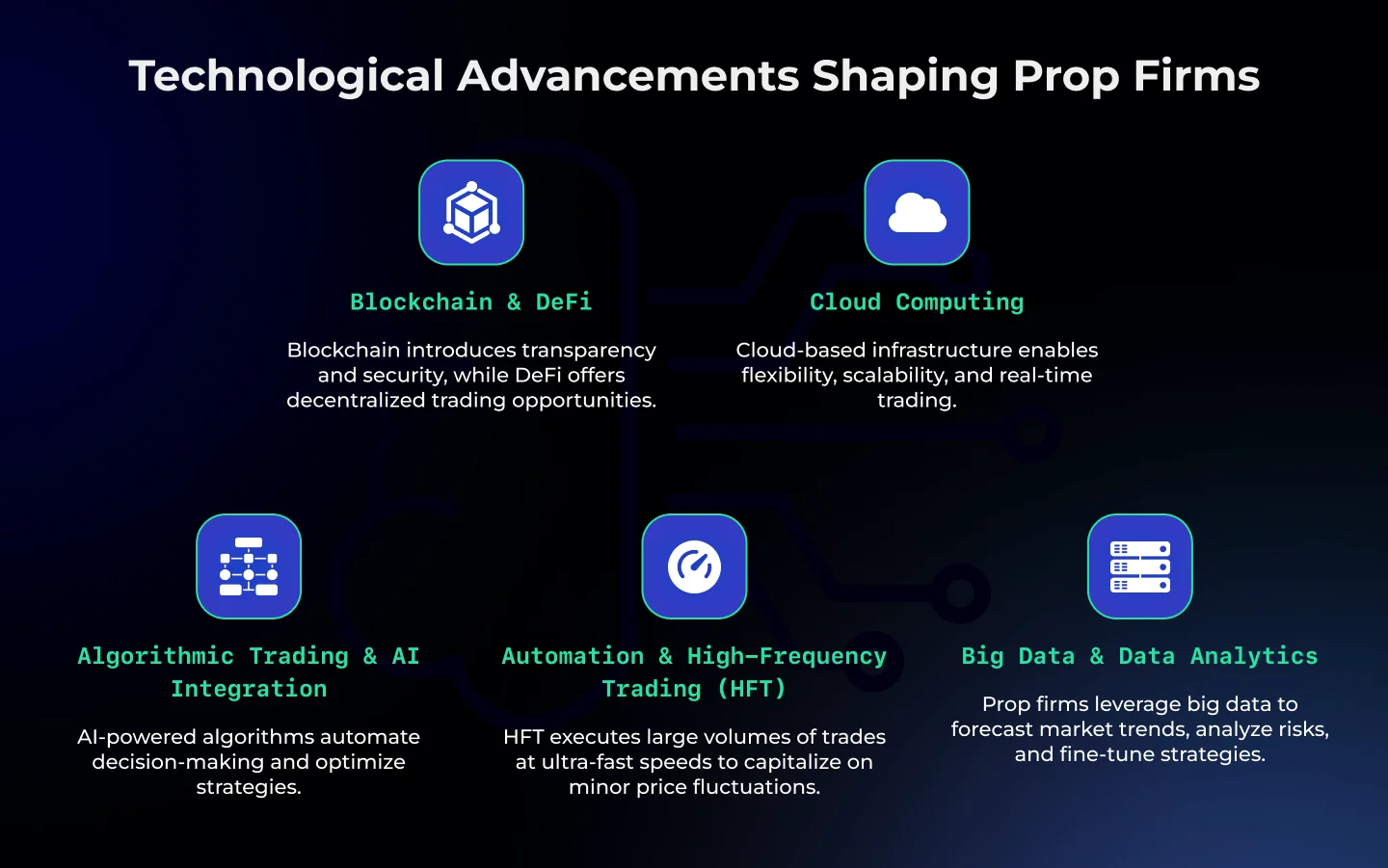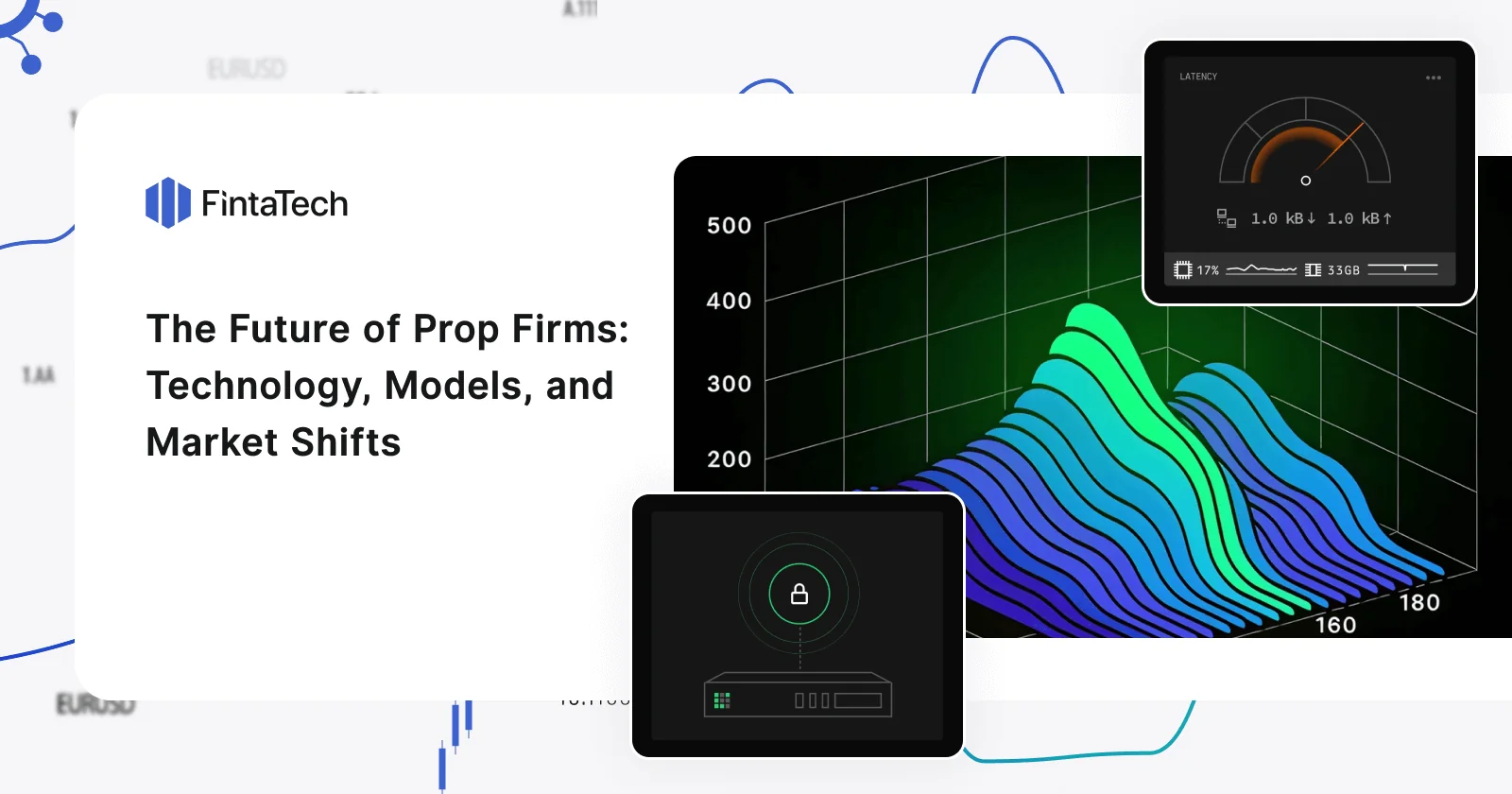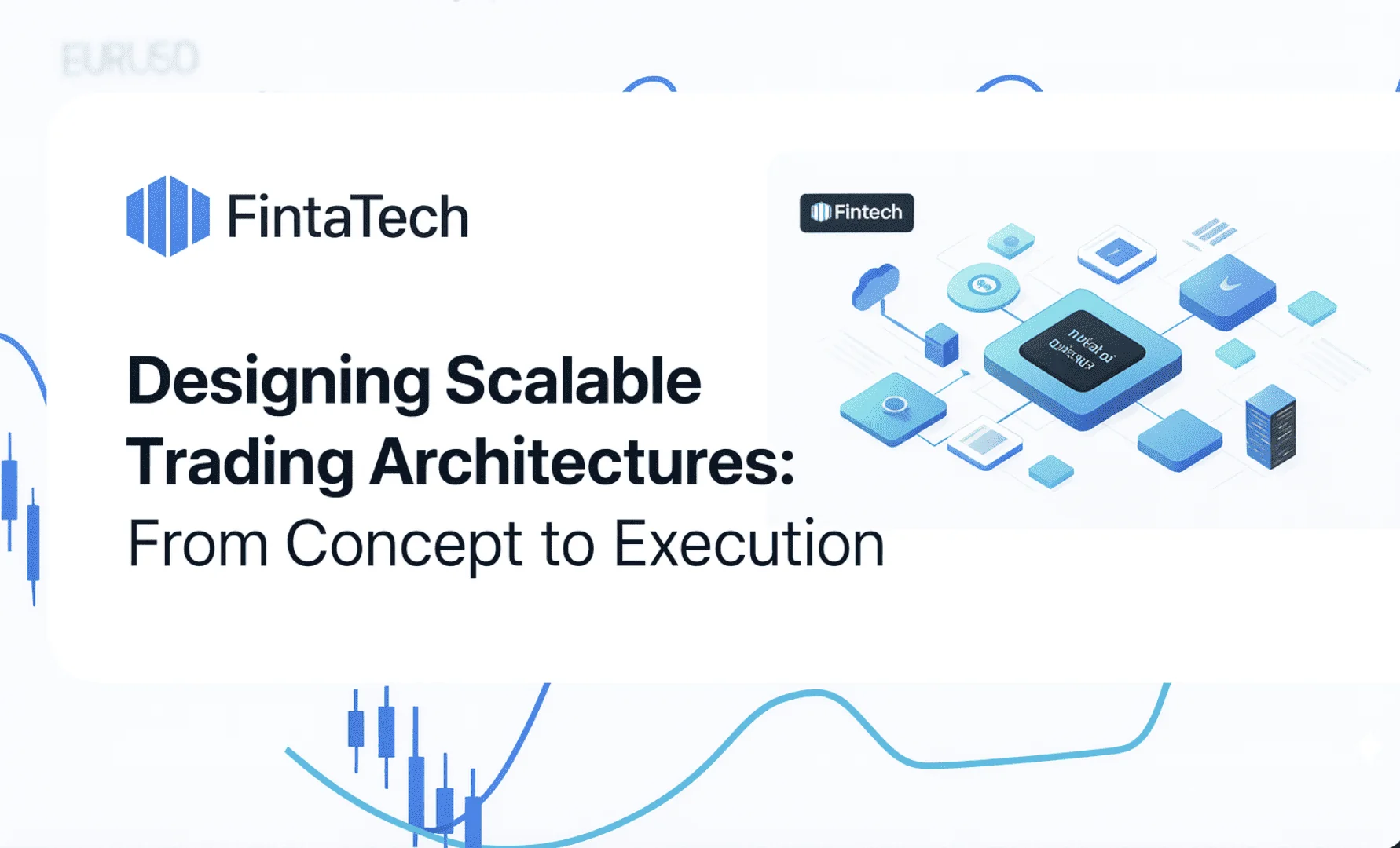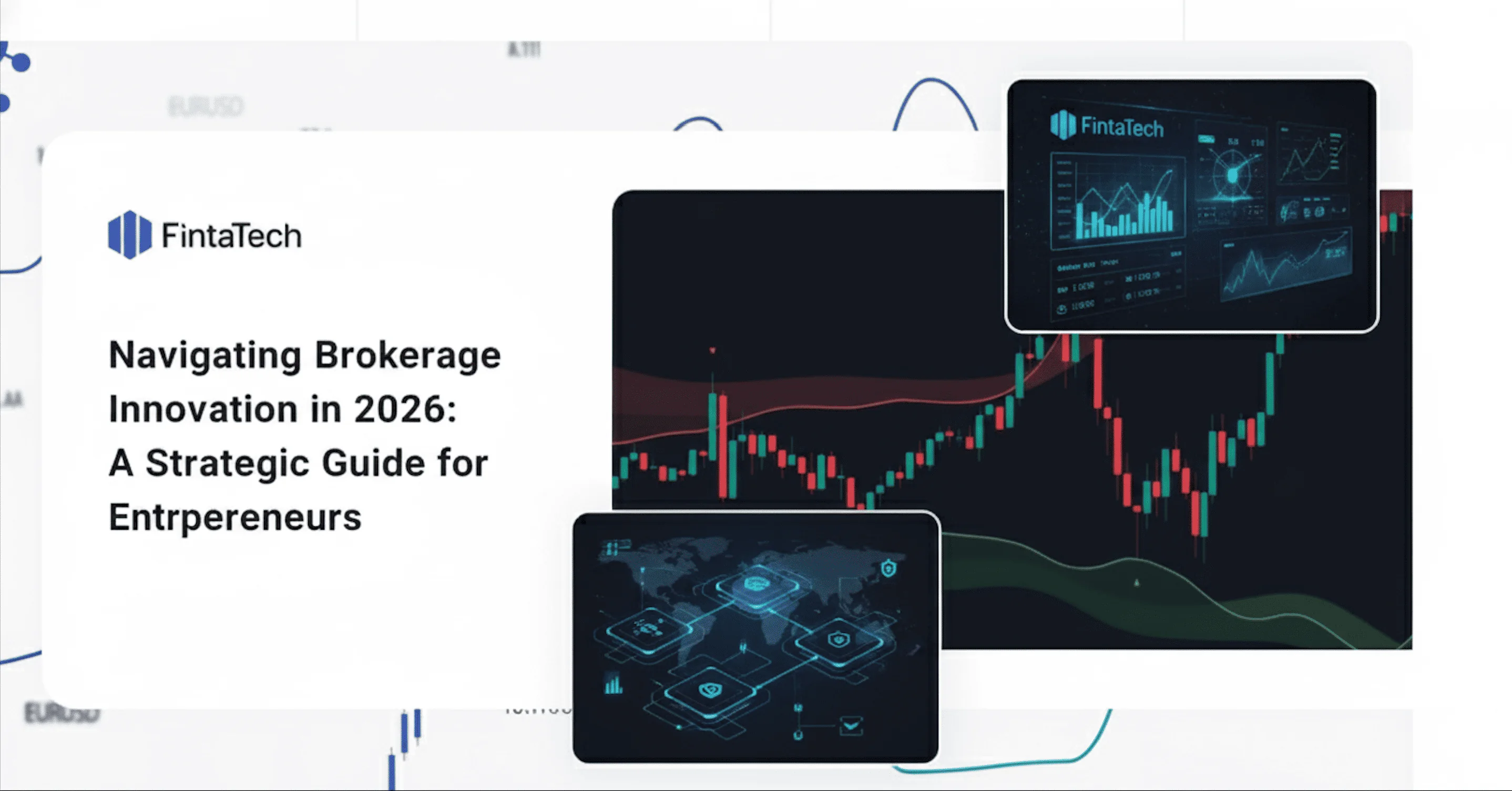Proprietary trading firms (prop firms) have long been a gateway for ambitious traders seeking institutional capital without the risk of their own funds. However, the prop trading landscape of 2025 is a far cry from the models that once ruled the industry. With the rise of algorithmic decision-making, hybrid funding structures, and groundbreaking technological advancements, both the operational dynamics of prop firms and the role of traders within them are undergoing significant transformation.
In this article, we’ll explore the key shifts in technology, business models, and the broader market ecosystem, and how these changes are shaping the future of proprietary trading. As the industry adapts to new innovations and evolving market conditions, it’s crucial to understand what lies ahead for prop firms and the traders who drive.
The Evolution of Prop Firms: A Quick Overview
Proprietary trading firms, or prop firms, have evolved significantly since their inception in the early days of modern financial markets. Initially, prop firms were small, niche players that provided talented traders with the capital needed to trade in exchange for a share of the profits. In the early years, these firms typically focused on more traditional asset classes like stocks and bonds, using manual trading methods that relied heavily on human intuition and experience.
During the 1980s and 1990s, as financial markets grew more complex and technology advanced, prop firms began to adopt more sophisticated trading strategies. The introduction of electronic trading platforms and the proliferation of market data allowed traders to make faster, more informed decisions. Prop firms became more reliant on computer algorithms, and the rise of quantitative and high-frequency trading (HFT) opened new opportunities for generating profits. These firms often employed teams of traders, mathematicians, and programmers to develop algorithms capable of making split-second trading decisions.
By the 2000s, prop firms were more firmly established as significant players in financial markets, competing directly with hedge funds and investment banks. Many of them shifted focus to proprietary trading strategies, including options, futures, and commodities, which offered opportunities for greater leverage and more diverse profit streams. Additionally, these firms began to expand globally, taking advantage of global market access and diversifying their operations across different time zones and markets.
In the past decade, the rise of artificial intelligence (AI), machine learning, and big data has further transformed the prop trading landscape. These technologies allow for more efficient trade execution, real-time market analysis, and automated decision-making, significantly reducing human intervention. Prop firms increasingly rely on sophisticated algorithms and machine learning models that can process vast amounts of data to identify trends, analyze risk, and generate profits.
The latest shift in the evolution of prop firms is seen in the growing adoption of hybrid funding models, which allow traders to access capital from various sources, including crowdfunding platforms, external investors, and innovative profit-sharing models. This shift is democratizing access to institutional-grade trading capital, providing more opportunities for aspiring traders to enter the market and grow.
The evolution of prop firms has been marked by a constant push for innovation, from the manual trading floor to today’s tech-driven, algorithmic-based operations. As we look ahead, the future of prop trading is set to be defined by continued technological advancements, shifting business models, and an increasingly dynamic global marketplace.
Technological Advancements Shaping Prop Firms
The world of proprietary trading has undergone a dramatic transformation in recent years, largely driven by advancements in technology. As markets become more sophisticated, prop firms are increasingly relying on cutting-edge tools and innovations to gain a competitive edge. From algorithmic trading and AI-driven decision-making to automation and big data analytics, these technologies are reshaping how prop firms operate and how traders approach the markets.

Algorithmic Trading and AI Integration
One of the most significant technological shifts in recent years has been the rise of algorithmic trading, which relies on complex mathematical models to execute trades automatically. Prop firms have been at the forefront of this shift, using algorithms to take advantage of market inefficiencies, minimize human error, and execute trades with unprecedented speed. These algorithms can analyze vast amounts of market data in real-time, identifying opportunities and executing trades in fractions of a second — far quicker than any human trader could.
The integration of Artificial Intelligence (AI) into these algorithms is further enhancing their capabilities. AI systems, especially those using machine learning, allow prop firms to refine trading strategies over time. Instead of following static rules, AI-powered systems learn from historical data, adapt to changing market conditions, and continuously optimize trading strategies. This dynamic approach is making it easier for prop firms to stay competitive in increasingly volatile and fast-moving markets.
Automation and High-Frequency Trading (HFT)
Alongside algorithmic trading, automation has become a key player in prop trading. High-frequency trading (HFT) is a particularly important aspect of this trend. HFT involves executing large numbers of orders in fractions of a second, capitalizing on small price movements that often last only a few milliseconds. The ability to leverage sophisticated algorithms and lightning-fast execution speeds gives prop firms an edge in extracting profits from minute market movements that would otherwise go unnoticed.
Automation also plays a critical role in reducing the reliance on human traders for executing strategies. Automated systems can handle the bulk of market analysis, order execution, and risk management, freeing up traders to focus on strategy development, performance analysis, and oversight. This allows for greater consistency and efficiency in the trading process, as well as the ability to scale operations without adding a proportional increase in headcount.
Data Analytics and Big Data
In today’s data-driven world, having access to and effectively analyzing vast amounts of market data is a game-changer for prop firms. Big data technologies enable firms to collect, store, and process enormous volumes of data in real-time — from market feeds, economic indicators, social media sentiment, and news sources. This wealth of information is then analyzed to identify trends, assess risks, and refine trading strategies.
The use of advanced data analytics tools allows prop firms to make informed, data-backed decisions that would be nearly impossible with traditional analysis methods. Predictive analytics, powered by machine learning models, can forecast potential market movements and guide traders in adjusting their strategies accordingly. The ability to process this data rapidly also allows prop firms to gain an edge over competitors who may not have the same level of technological sophistication.
Blockchain and Decentralized Finance (DeFi)
While blockchain technology is still in the early stages of adoption in proprietary trading, its potential is enormous. Blockchain’s transparency, security, and ability to execute decentralized contracts are beginning to influence how some prop firms approach trading and asset management. Additionally, decentralized finance (DeFi) protocols, which leverage blockchain for peer-to-peer transactions without intermediaries, are creating new opportunities for prop firms to explore innovative trading strategies in the digital asset space.
Prop firms are also considering the role of cryptocurrencies in diversifying their portfolios and expanding into new asset classes. The growing acceptance of digital currencies and the underlying technology offers a new frontier for firms that are looking to stay ahead of the curve and tap into emerging markets. As prop firms continue to embrace technological innovation, the role of these tools in shaping future strategies will only grow. By leveraging algorithmic trading, AI, automation, big data, and emerging technologies like blockchain, prop firms are positioning themselves to remain at the cutting edge of the trading world. The impact of these advancements on market behavior, efficiency, and profitability will likely continue to reshape the industry for years to come.
What the Future Holds: Trends and Predictions
As the world of proprietary trading continues to evolve, several key trends and predictions are beginning to take shape. The convergence of technology, new business models, and global market changes is setting the stage for a transformation in how prop firms operate and how traders approach their craft. In this section, we’ll explore what the future holds for the prop trading industry, focusing on key trends and predictions that will define the next era of trading.
Increased Automation and AI Dominance
One of the most prominent trends shaping the future of prop firms is the increased reliance on automation and artificial intelligence (AI). As trading algorithms become more sophisticated, AI is poised to play an even larger role in decision-making. Machine learning models will continue to evolve, allowing prop firms to make faster, more accurate predictions and execute trades at speeds far beyond human capability. This will lead to even more automated decision-making, reducing human error and enhancing the efficiency of trading strategies.
In the coming years, AI will not just automate trading decisions but also help firms with risk management, portfolio optimization, and fraud detection. The ability to process vast amounts of data in real-time will allow firms to uncover new opportunities, mitigate risks, and maintain an edge over competitors. As these technologies become more advanced, the lines between human traders and AI-driven systems will continue to blur, with human oversight and strategic thinking becoming increasingly valuable in guiding AI algorithms.
Expansion of Retail Trader Access to Prop Firms
As technology continues to democratize access to financial markets, retail traders will find more opportunities to engage with prop firms. The traditional barriers to entry for aspiring prop traders — such as high capital requirements and access to firm capital — are gradually being lowered by the rise of hybrid funding models and crowdfunding platforms. These models are allowing individual traders to access institutional-grade capital with less upfront investment, providing a pathway for more retail traders to enter the world of professional trading.
Additionally, platforms that offer education, resources, and community engagement are making it easier for retail traders to develop their skills and gain access to prop firm resources. As a result, the gap between retail traders and institutional players will continue to narrow, and the influx of new talent will foster increased competition within prop firms. This trend also highlights the growing importance of financial literacy and training programs that provide aspiring traders with the tools and knowledge they need to succeed.
Rise of Sustainable and Ethical Trading
In recent years, there has been a growing demand for sustainable and ethical investing. This trend is likely to extend into the world of prop trading as more firms adopt Environmental, Social, and Governance (ESG) principles. Traders and investors are increasingly looking to align their investments with their values, focusing on companies and assets that meet certain sustainability criteria.
Prop firms that incorporate ESG principles into their strategies and investment decisions will likely attract a broader base of investors and clients. As global markets become more focused on sustainability, firms that prioritize ethical trading practices may not only improve their reputations but also outperform their competitors by tapping into the growing market of socially responsible investing. In the future, we may see prop firms increasingly using AI and big data to identify and prioritize ESG-compliant opportunities in their trading strategies.
Blockchain, Cryptocurrencies, and Decentralized Finance (DeFi)
Blockchain technology and cryptocurrencies are already making waves in the financial world, and prop firms are beginning to explore their potential as both trading assets and tools for innovation. As blockchain continues to mature, it could radically change how prop firms manage assets, execute trades, and structure deals.
Decentralized Finance (DeFi) platforms, which use blockchain technology to create open-source, decentralized financial services, are also presenting new opportunities for prop firms to diversify their strategies and access markets that were previously difficult to navigate. Cryptocurrencies, tokenized assets, and decentralized exchanges could become mainstream components of prop firms’ portfolios, offering new opportunities for growth and diversification.
While blockchain and DeFi are still in relatively early stages, prop firms that embrace these technologies will be well-positioned to take advantage of new opportunities as the space continues to evolve. In the future, we may see more prop firms incorporate blockchain-based trading strategies, tokenized assets, and smart contracts to increase transparency, reduce operational costs, and unlock new markets.
The Role of Quantum Computing
Looking further into the future, quantum computing could have a profound impact on the world of proprietary trading. While still in the experimental stage, quantum computing has the potential to revolutionize the way complex financial models are constructed and executed. Quantum computers could process information exponentially faster than today’s classical computers, enabling prop firms to perform calculations, simulations, and optimizations that were previously impossible.
This could lead to breakthroughs in algorithmic trading, risk analysis, and portfolio management. Quantum computing could enhance the accuracy of predictive models, improve pricing models for complex derivatives, and create new opportunities for arbitrage and risk management. While quantum computing is still some years away from widespread implementation, prop firms that invest in this technology early will likely gain a competitive edge in the future.
Increased Regulation and Compliance Pressures
As the world of prop trading continues to evolve, regulatory pressures are expected to increase. Governments and financial authorities around the world are becoming more focused on ensuring market stability and protecting investors from fraud and manipulation. This will likely result in stricter regulatory frameworks for prop firms, particularly around areas such as transparency, risk management, and investor protection.
To stay compliant, prop firms will need to invest in advanced compliance technologies, such as AI-powered surveillance systems, to detect and prevent market abuse, insider trading, and other illicit activities. In addition, the growing adoption of regulatory technology (RegTech) solutions will help firms streamline their compliance processes and reduce the burden of manual reporting. Firms that embrace these changes will not only stay compliant but also build trust with investors, positioning themselves for long-term success.
The Ongoing Rise of Hybrid Models
Finally, the future of prop trading will see continued growth in hybrid funding models that combine internal capital with external sources. As firms continue to diversify their revenue streams and explore new ways to raise capital, hybrid models that integrate crowdfunding, tokenization, and external investors will become more commonplace. These models will allow firms to scale rapidly while balancing risk, attracting both retail traders and institutional investors.
In the coming years, hybrid models will become more sophisticated, offering greater flexibility in profit-sharing arrangements and risk management strategies. This shift will enable prop firms to tap into a broader range of funding sources while offering more opportunities for traders to access institutional capital.
Conclusion
The future of prop trading is exciting and full of opportunities. The combination of technological advancements, new business models, and evolving market dynamics is setting the stage for a radically different landscape. From increased automation and AI-driven trading to the integration of blockchain and cryptocurrencies, the prop trading world is poised for a major transformation. By staying at the forefront of these trends, prop firms can remain competitive, attract top talent, and capitalize on the opportunities that the future holds.






Twitter
Linkedin
Facebook